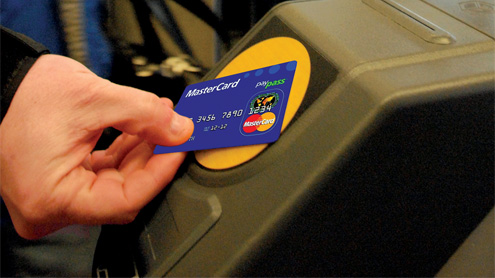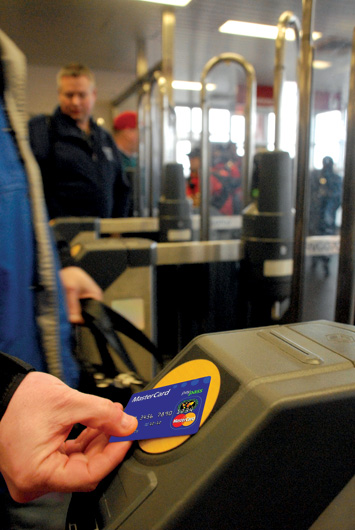
Cubic modernizes fare payments for the 21st century

By Richard Tackett
Cubic Transportation Systems, a division of Cubic Corporation, San Diego, CA, is making bold strides to carry fare collection into the Information Age.
Sensing years ago that open payments were the future of not just fare collection, but financial transactions in general, the company set a plan into action to deploy open fare systems across the globe. With major fare collection installations launching or installed in Chicago, Philadelphia, southern New Jersey, Vancouver and London, Cubic is moving the international conversation toward new technologies and streamlined collection practices.
Pradip Mistry, Cubic vice president of engineering, sees the current state of open payments as a stepping stone toward the high-tech future of fare collection — and not the final product.
“Open payment is not a new concept,” says Mistry. “It has just taken time to get into the market. It is actually the technology catching up. If you talk about open payments, you’re talking about the ability to use your credit or debit card. We see that as just a step to what’s going to happen in the next few years. You’ll be using your smartphone as your primary instrument for payments, traveling, ticketing and other applications.”
Mistry says smartphones with near field communications (NFC) similar to mobile boarding passes at the airport will increase in their relevance to transit operations.
“By the end of this year, I think there will be at least 100 different phones with near field communication,” he says. “The volume of NFC phones will increase over the next few years.”
Logistical advantages
Until the NFC market takes off, Cubic remains in the business of deploying multiple forms of open fare payments. More and more agencies are trying to move away from cash payments because the logistical costs involved are too high. Running “money trains” to collect cash from fare boxes requires plenty of man-hours, additional security and a whole set of employees to count the money.
Open fares and other kinds of cashless payments reduce the need for those overhead costs, and Mistry says that consumers consider it a more convenient method.
Agencies large and small
If a transit agency is interested in Cubic’s services, Cubic will either work directly with them or through transit consultants.
“Typically, these are open procurements,” says Mistry. “The agencies come out with a request for information followed by a request for proposals. That’s the standard process.”
Mistry says that most of Cubic’s customers tend to be larger agencies. He thinks open fares are certainly an option for smaller transit agencies, but there isn’t as much demand.
“As for getting everyone to use the same medium, the chances are low,” he says. “There is a significant trend (toward open fares), but you have to ask the smaller agencies if their ridership is big enough, and that’s a decision the agencies have to make for themselves. If they went to an open payment, it may be viable from a cost perspective.”
Mistry says that Cubic’s open fare projects are under development in Vancouver and for the Chicago Transit Authority (CTA), and that Transport for London (TfL) experimented with open fares during the 2012 Olympic Games.
A fully functional open fare project went live last year at the Port Authority Transit Corporation (PATCO) system in the Philadelphia/New Jersey region. Cubic partnered with PATCO to offer riders the world’s first transit agency-branded contactless Visa prepaid card for transit and retail purchases.
The Cubic/PATCO partnership represents one of the world’s foremost “open-loop” payment systems, where the contactless Visa card can be used anywhere the card is accepted.
NextAccount
The latest step by Cubic has been toward integrating the open-loop method with a new interface called NextAccount, in which, in addition to open-loop bank card payments and transit-issued passes, riders will have the option of paying fares from an account.
Traditional smart card technology records payments via a computer chip inside the transit pass. The fare’s value is within the card itself. With NextAccount, Cubic places the fare’s value in an account. Customers can authorize their bank cards or traditional transit-issued smart cards with their “digital signature,” so their account is charged whenever they swipe their card of choice.
“If, for example, you have a Visa card, you can with NextAccount associate a monthly pass with it,” says Mistry. “Likewise if an agency has a weekly or monthly pass, a product that the customer is familiar with, they can still continue to use them. The only difference is the medium.”
The convenience of open-loop payments has many transit agencies wishing to go completely cashless. Though the logistical cost savings would be great, Mistry thinks differently.
“I know that’s what the agencies would like to do, but I just don’t know if that’s going to happen,” he says. “The passenger has the right to pay with cash, and the passenger is always right. As long as there are passengers who want to pay with cash, the agencies have to accommodate them.” BR
